Thunderbolt on Windows Part 2: Intel's DZ77RE-K75 & ASUS' P8Z77-V Premium
by Anand Lal Shimpi on June 3, 2012 2:08 AM EST- Posted in
- Motherboards
- CPUs
- Intel
- Asus
- Thunderbolt
- Ivy Bridge
- Chipsets
Performance
In our earlier look at Thunderbolt under Windows I didn't have a working Pegasus driver to really push the limits of the interface's bandwidth. With that now changed, I went to work. I started by pulling out all of the hard drives from the Pegasus R6 and installed four SSDs. I didn't have four identical drives so I threw in a mix of SF-2281 based drives and Vertex 4s. The lowest common capacity was 240GB so the resulting logical RAID-0 drive I built was just under 1TB in size. I then ran a 128KB sequential read test using Iometer to see what sort of performance I could get from the setup:
With this configuration, I achieved a very respectable 922MB/s. Note that the fastest speed I ever attained under OS X was 1000MB/s so we're not all that far off the peak. To try and move the needle a little further I hooked up the SSD based LaCie Little Big Disk and performed a 128KB sequential read across both the LBD and the SSD equipped Pegasus:
Performance moved up a bit to 933MB/s but it's clear that we should've seen a bigger increase in performance from adding another two SSDs to the chain. The fact that performance didn't go up tells me that we're reaching the limits of the interface.
As a last ditch effort I added two more SSDs to the Pegasus R6 chassis, a pair of 128GB Samsung SSD 830s in RAID-0. I repeated the 128KB sequential read test, but now across all four drive targets (2 in the LBD, and 2 RAID arrays in the Pegasus R6):
Unfortunately, performance didn't change. It's safe to say that on a single Thunderbolt port you can get just under 7.5Gbps of bandwidth, in one direction, to a chain of devices. Each Thunderbolt port should have two channels however; the second should allow DisplayPort traffic to be carried without impacting performance. To test this theory I repeated the test but with Apple's Thunderbolt Display in the chain. To drive the 27-inch 2560 x 1440 panel at 60Hz you need around 7Gbps of bandwidth (more if you take into account overhead). With the display connected I repeated the transfer test:
Performance actually went up by a few MB/s, but basically remained unchanged from the earlier 7.5Gbps peak. While I never was able to hit the 8Gbps I got under OS X, that was with the very first iteration of Thunderbolt support under OS X as well as from Promise. It's entirely possible that further tuning/firmware updates have limited performance a bit since then. Either way, it's safe to say that Thunderbolt under Windows is capable of the same class of performance we've seen under OS X.
Pushing video out to the display while pulling in data from external storage devices is actually the best case scenario for Thunderbolt, but what happens if we're sending traffic out on both channels? I conducted the same test with the Thunderbolt Display attached but this time I ran a 128KB sequential write to the attached SSDs:
There's a bit of a performance drop (~6.9Gbps vs. 7.5Gbps) but it's unclear whether this is due to lower SSD write speeds or upstream bandwidth limitations for a single Thunderbolt port.
Final Words
Armed with the right drivers, Promise's Pegasus helped prove that Thunderbolt can be nearly as fast under Windows as it is under OS X. Similar to what we saw under OS X, around 7.5Gbps isn't tough to achieve over a single Thunderbolt port. There's also no significant performance impact seen when driving DisplayPort over the same interface.
The first Thunderbolt equipped motherboards are expensive, but that's mostly a function of Thunderbolt being paired with the absolute highest end models. Over time, I'd expect more ubiquitous deployment of the interface—although it's not clear how long that would take.
Intel's certification program for Thunderbolt on Windows definitely improves the behavior of devices and generally makes the interface OS agnostic. Unfortunately, the reliance on the certification program for proper functionality under Windows means the interface will get off to a rough start on its new platform. As of today, there are no publicly available certified Windows drivers for Thunderbolt devices. This will change, hopefully over the course of the next quarter, but we still need to play a bit of the waiting game.
We also need more Thunderbolt devices. Apple's Thunderbolt Display is a great example of what you can do with Thunderbolt, but without official Windows support we're left waiting again.
Despite the teething problems, I am glad to see Thunderbolt finally arrive on Windows PCs. While there's an obvious fit for mobile, I do believe that even desktop users can benefit from Thunderbolt. At the bare minimum, it can simplify external cable management with only a single cable carrying Ethernet, audio, USB, DisplayPort, etc... from your PC to your Thunderbolt hub and/or display. The fact that it can also move high performance storage out of your chassis might also enable smaller/more interesting desktop form factors. There's an obvious fit with all-in-one designs but even things like mini-ITX become a lot more flexible with Thunderbolt.


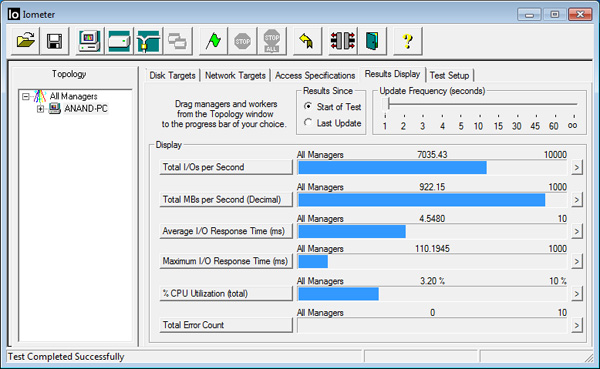
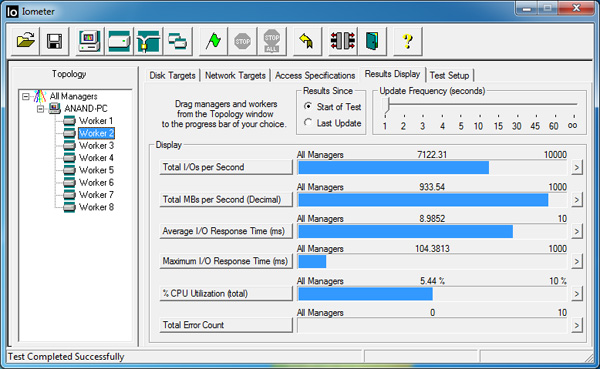
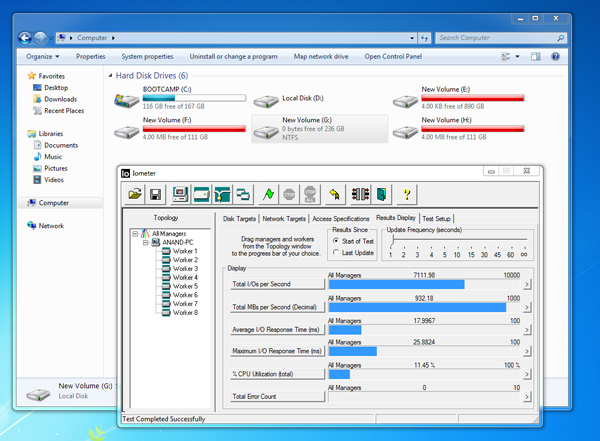
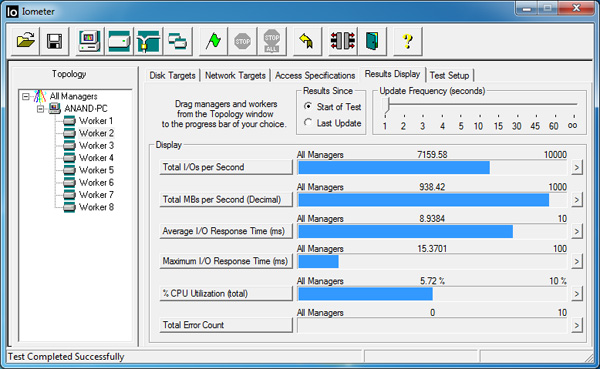
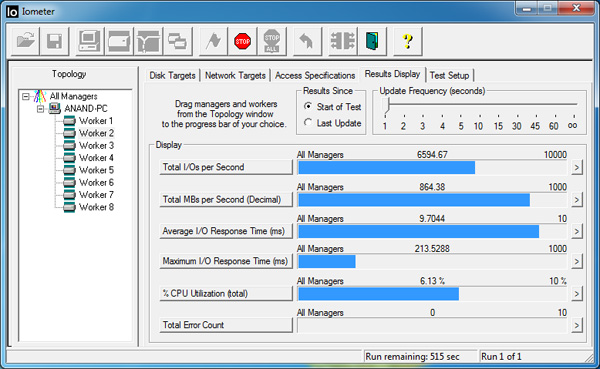
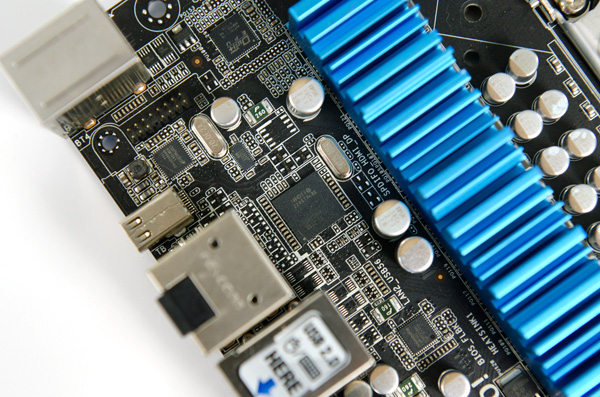
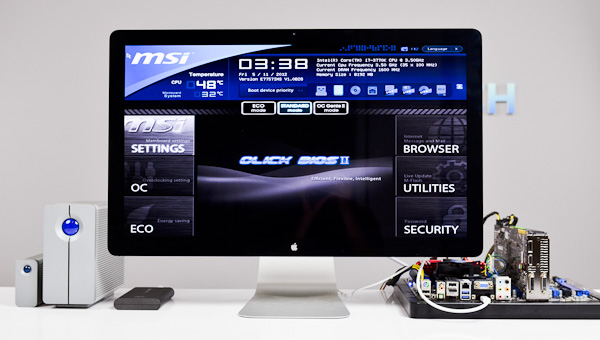
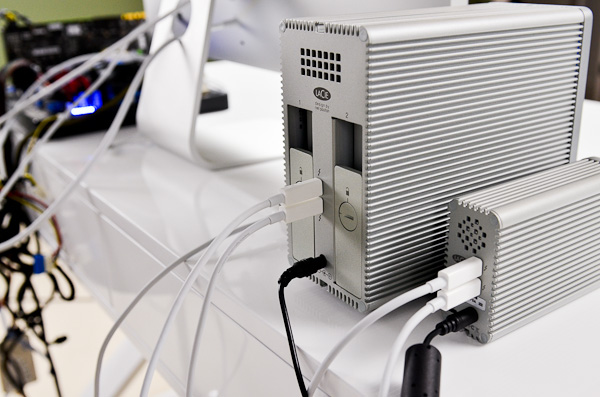








116 Comments
View All Comments
MobiusStrip - Thursday, June 14, 2012 - link
"Great - another proprietary standard that no one can get for a full year..."WTF are you even doing on this site? Your knowledge is clearly far below that of the intended audience, so why don't you get back to your consumer-oriented sites and tout the virtues of USB to your fellow dolts?
Pneumothorax - Sunday, June 3, 2012 - link
In it's intro, the great prophet Jobs bragged about how superior TB was going to be vs. USB 3.0. Apple's pathetic 1 year exclusivity agreement plus $50 cable and Intel's high priced TB controllers are sure to doom this standard. How many FW400 ports are sitting empty on thousands of motherboards as we speak?mavere - Sunday, June 3, 2012 - link
*shrugs*Firewire found its niche in high end A/V equipment. Guess what computers those professionals tend to buy?
The fact that TB doubles as a mDP means that TB can coexist with USB just fine, and through Apple, manufacturers are also guaranteed a steady and growing base of affluent costumers. That assures at least some high-end devices for those who require that much throughput.
If you or I need to consistently move files at almost 1 gigabyte/sec, we can now easily do so. The world is improved; progress is achieved; vitriol is unneeded.
ananduser - Sunday, June 3, 2012 - link
Pneumothorax was being realistic. TB could've been managed better and morph into a great solution. Instead it is pushed into a niche because of the whims of 2 companies. He's not berating the tech but the handling of the interface.coder543 - Sunday, June 3, 2012 - link
no, he's wrong. TB would have yielded an epic failure if it didn't have Apple pushing it along. What manufacturers would have worked so hard to get TB laptops and desktops on the market? Let alone devices like hard drives! No.. it would've been an eSATA.jleach1 - Sunday, June 3, 2012 - link
No...you're wrong. Just look at the state of Displayport.Thefinaleofseem - Sunday, June 3, 2012 - link
You mean the Displayport that's on a ton of video cards now? The very connector that is the standard for many high-end displays? You mean the interconnect that will because a whole lot more useful when we see ultra high-resolution displays hit the market, most likely this year? The kind that may easily exceed the 4K x 2K max on HDMI?Shadowmaster625 - Monday, June 4, 2012 - link
DP has been around for years and it is still rarely used. I bet less than 5% of all PCs bought in the last year use it. I know of one, and it is just a nuisance because we dont have any monitors with displayport so it goes right into a dongle. DP was a waste of engineering. In 2012, it still is. It has surely cost the industry millions in lost productivity (WTH is this stupid thing, why dont I have video? Why doesnt my monitor have this port? How do I connect it? Do I NEED to connect it? etc. It is an utter debacle.)repoman27 - Monday, June 4, 2012 - link
That's why Intel and AMD are both set to phase-out LVDS support from their product lines over the next couple years and transition to eDP? Because it was a waste of engineering? That's why NPD In-Stat predicts a 95% eDP attach rate in notebook PCs in 2015?Abut 90 million PCs shipped with DP support last year, or 25% of the global total, vs about 180 million with HDMI. Where DisplayPort needs to gain traction is in the external display market. Although the adoption rate grew by 160% last year, as long as people are happy with cheap 1920x1080 panels, the CE targeted HDMI standard is more than sufficient.
CeriseCogburn - Monday, June 4, 2012 - link
Most people cannot stand as high as 1920X1080 on their desktop panels, and far more don't have close to that on their laptops.Most people need 1280X1024 to be able to see their icons and text, maximum.
They might be down for 1366X768 no problem, but 1280X800 is much more desirable overall.
You're going to have to upgrade people's eyeballs to get anywhere.